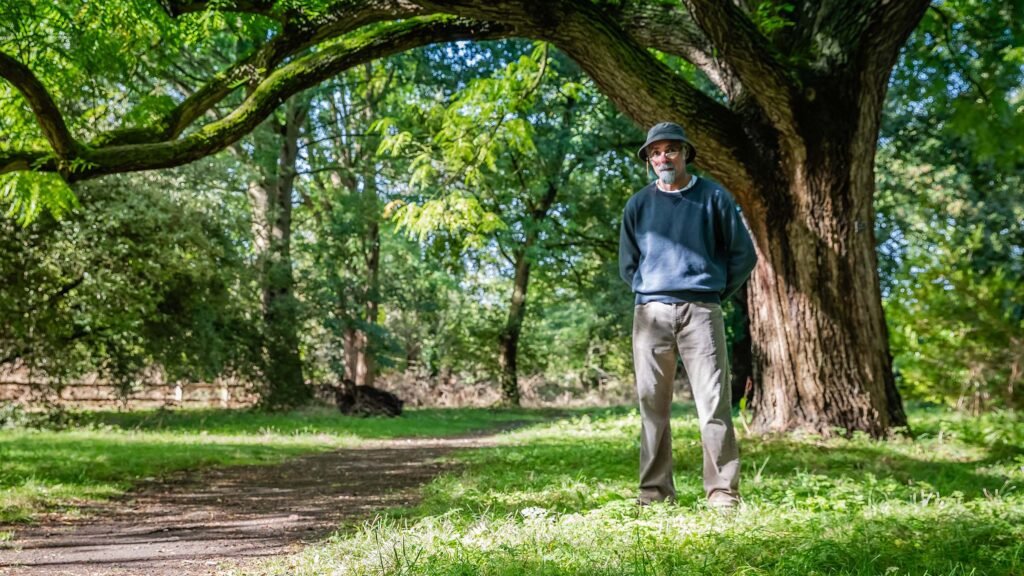The natural world is more than an inspiration for my work. It’s an indelible part of it. Organic elements and their place are absorbed into my installations, paintings and sculptures.
My installation The Sea People (2021) took the form of ‘abandoned people’ on an Essex beach and was moulded from the clay and detritus I found there. I wanted to raise awareness of coastal erosion and the loss of land.
My project in the Botanic Garden is similarly being shaped by the place itself. The Garden’s illustrious history, its role in protecting the world’s biodiversity at a time of climate crisis, and its beauty in the changing seasons will help shape the outputs of the project. I hope that visitors will be able to explore the Garden and engage with nature in a new way, through the joy of discovering its unseen colours.
The residency is a unique opportunity to work with researchers and artists. I’ve hand-dyed feathers for Professor Ulinka Rublack in the Faculty of History to support her research on material culture and costume. And I’m dyeing textiles for a contemporary dance performance by the Cambridge-based Tani Gill Dance Company, which will be filmed in the Garden and shown at The Cockpit in London in June.
Feathers coloured using Nabil’s dyes
Feathers coloured using Nabil’s dyes
Although there’s a hefty dose of trial and error in my work, the recipes are rooted in medieval scripts. I work with 14th to 16th-century recipes, including one kept in Cambridge University Library which uses ‘rotten apples’, saffron and verdigris to make green ink. Many have been translated by Dr Mark Clarke, a specialist in medieval craftsmen materials and techniques and author of The Art of All Colours – a very good study and catalogue of recipe books, which I frequently refer to. It is also a valuable source for all those interested in the techniques and practices of medieval arts.
My process is a going back to the old ways of making colour. I have a workshop in the Garden. There I heat the collected plant material in water, vinegar or white wine to release the dye and then add a mordant – which is a substance which helps bond the dye. This can either brighten, dull or deepen the dye, enriching the final colour as well as fixing the dye to the fabric fibres.
I often won’t know the outcome of a colour until it’s here. When I was doing my art degree, I felt that getting a paint tube from the shop somehow lost something of the colour it was meant to be. So I started growing and making pigments from the herbs in my garden, establishing a new way to connect art through nature.
Impermanence is a part of that journey. I might end up with a vibrant crimson, yellow or deep blue which could change over time due to the nature of organics. But change is fine. Natural colourants are a reminder that nothing is forever – and I love watching and recording their colour journeys as they progress.
Nabil’s work is supported by Arts Council England.
For more information about events in the Cambridge University Botanic Garden, please visit the Garden’s ‘What’s On’ pages.
Published 16 October 2023
With thanks to:
Nabil Ali
Cambridge University Botanic Garden
Words: Louise Walsh
Banner photo: Nick Saffell
All other photos (unless specified): Louise Walsh
The text in this work is licensed under a Creative Commons Attribution 4.0 International License






